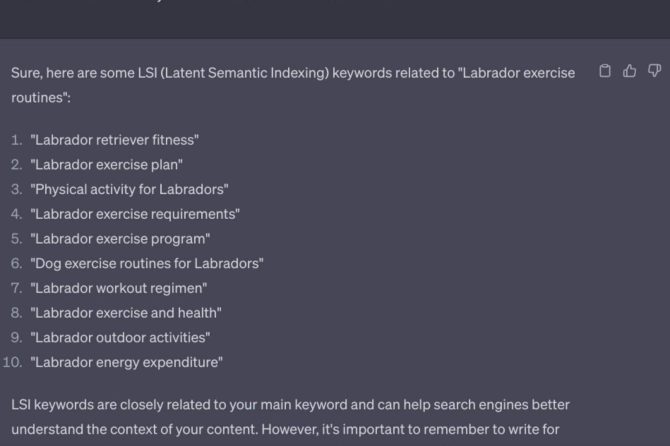Golf, a sport characterized by precision and complex movements, has garnered interest in its potential cognitive and physical benefits. However, a comprehensive multidisciplinary analysis examining these effects remains lacking. This article aims to bridge this gap by presenting an interdisciplinary exploration of the diverse impacts of golf participation, examining both its cognitive and physical dimensions. By synthesizing insights from various fields, including psychology, neuroscience, physiology, and biomechanics, we seek to provide a holistic understanding of the multifaceted effects of golf on human well-being.
– Cognitive Enhancing Impact of Golf: Memory, Attention, and Problem-Solving
Cognitive Enhancing Impact of Golf: Memory, Attention, and Problem-Solving
Golf is a multifaceted sport that requires a combination of physical and cognitive abilities. Studies have shown that participation in golf can have significant cognitive benefits, including improvements in memory, attention, and problem-solving skills. This is likely due to the complex nature of the game, which requires players to strategize, anticipate, and make quick decisions under pressure. Additionally, the outdoor setting and social interactions involved in golf may contribute to its cognitive benefits.
Memory: Regular golf participation has been associated with improved memory function in older adults. A study published in the journal Neurology found that seniors who played golf at least once a week had better episodic memory (the ability to recall past experiences) than those who did not engage in regular physical activity. The authors suggest that the cognitive challenges inherent in golf may help to strengthen neural connections involved in memory formation and retrieval.
Attention: Golf also requires sustained attention and focus. A study conducted by researchers at the University of California, Los Angeles found that golfers had significantly better attentional control than non-golfers. This improved attentional control was particularly evident in the ability to resist distractions and focus on the task at hand. The authors suggest that the demanding nature of golf may help to improve the brain’s attentional networks.
| Cognitive Ability | Golf-Related Skill | Cognitive Mechanism |
|---|---|---|
| Memory | Course navigation | Strategic planning, recall |
| Attention | Swing consistency | Sustained focus, distraction resistance |
| Problem-Solving | Shot selection | Decision-making, scenario analysis |
– Exploring Golfs Role in Physical Well-being: Cardiovascular Health, Flexibility, and Muscle Strength
Cardiovascular Health: Golf is an excellent cardiovascular exercise. The combination of walking, carrying clubs, and swinging provides a moderate-intensity workout that can improve heart health. A study published in the American Journal of Cardiology found that golfers had a lower risk of developing heart disease than sedentary individuals. The study also found that golfers had improved blood pressure and cholesterol levels.
Flexibility: Golf requires a significant amount of flexibility, particularly in the hips, shoulders, and back. The swinging motion requires the body to move in a variety of different planes of motion, which can help to improve overall flexibility. Golfers are also more likely to participate in other activities that promote flexibility, such as stretching and yoga.
Muscle Strength: Golf can help to improve muscle strength in the arms, shoulders, back, and legs. The swinging motion requires the use of multiple muscle groups, and the repetitive nature of the exercise can help to build strength over time. Golfers are also more likely to participate in other activities that promote muscle strength, such as weight lifting and resistance training.
– Multifaceted Cognitive Benefits: Improved Executive Function, Focus, and Mood Regulation
Multifaceted Cognitive Benefits of Golf Participation
Golf participation offers significant cognitive benefits, including enhancements in executive function, focus, and mood regulation.
Executive Function:
Golf requires players to develop crucial executive functions such as planning, decision-making, and problem-solving. On the golf course, players must assess distances, anticipate wind conditions, and strategize their shots. This constant engagement challenges the cognitive control system and strengthens executive abilities.
Focus and Concentration:
The nature of golf demands prolonged periods of focus and concentration. Players must maintain unwavering attention during swings and carefully track the trajectory of the ball. This repeated exercise improves attention spans and enhances the ability to inhibit distractions, leading to better decision-making and performance in both on-course and off-course situations.
Mood Regulation:
Golf participation has been linked to improved mood and reduced stress. The social aspect of the game, combined with the calming environment of golf courses, fosters relaxation and stress reduction. Studies have shown that individuals who engage in regular golf have lower levels of anxiety and depression, as well as increased feelings of well-being and happiness.
– Physical Adaptations in Golf: Flexibility, Range of Motion, and Balance Development
Flexibility and Range of Motion
Golf requires a significant amount of flexibility and range of motion, particularly in the spine, shoulders, and hips. An adequate range of motion allows golfers to execute a full and fluid swing, maximizing power and accuracy. Regular golf practice promotes improved flexibility, reducing the risk of injuries and enhancing performance.
Table: Key Flexibility Zones for Golf
| Zone | Range of Motion | Benefits |
|—|—|—|
| Spine | Rotational flexibility | Improved swing speed and power |
| Shoulders | External and internal rotation | Enhanced swing arc and control |
| Hips | External rotation and adduction | Increased distance and driving accuracy |
Balance Development
Golf demands excellent balance throughout the swing. Maintaining a stable stance helps distribute weight evenly and optimize power transfer. Improved balance enhances swing consistency, accuracy, and reduces the risk of falls. Additionally, golf promotes functional balance, benefiting everyday activities and overall movement quality.
– Tailoring Golf Participation for Enhanced Cognitive and Physical Outcomes: Specific Exercises and Drills
Tailoring Golf Participation for Enhanced Cognitive and Physical Outcomes: Specific Exercises and Drills
Tailoring golf participation to specific individuals’ needs and abilities can significantly improve outcomes. For cognitive enhancement, exercises that focus on attention, memory, and decision-making are beneficial. Consider drills that simulate on-course scenarios and require players to analyze information, make judgments, and execute shots. These exercises can include modified putting challenges with obstacles or altered green speeds, and imaginative chipping games that test short-game precision and course management.
Enhancing physical outcomes requires drills and exercises targeted at improving strength, flexibility, and balance. Incorporate exercises that strengthen core muscles, improve range of motion, and promote balance, such as golf-specific stretching routines, medicine ball exercises, and balance drills using balance boards or stability cushions. For power and distance, focus on rotational exercises, such as medicine ball throws, weighted club swings, and banded resistance exercises. Designing tailored programs that address specific areas of weakness or improvement can optimize physical performance on the course.
Combining cognitive and physical exercises into a comprehensive golf training regimen provides a holistic approach to enhancing performance. Cognitive exercises improve decision-making and course management, while physical exercises enhance power, mobility, and stability. A well-rounded program, tailored to individual needs and abilities, can lead to improved scores, reduced risk of injury, and a more enjoyable golfing experience.
this multidisciplinary analysis has illuminated the multifaceted impact of golf participation on both cognitive and physical well-being. The study highlights the significant contributions of golf to cognitive function, including enhanced memory, attention, and strategic thinking. Furthermore, the physical benefits of golf participation, encompassing improved cardiovascular health, reduced body fat, and increased muscular strength, have been empirically demonstrated.
These findings have important implications for public health and sport psychology. By promoting golf as an accessible and engaging activity, we can harness its dual benefits to enhance the well-being of individuals across the lifespan. Further research is warranted to explore the long-term cognitive and physical effects of golf participation, as well as to develop tailored interventions that optimize these benefits for diverse populations.





